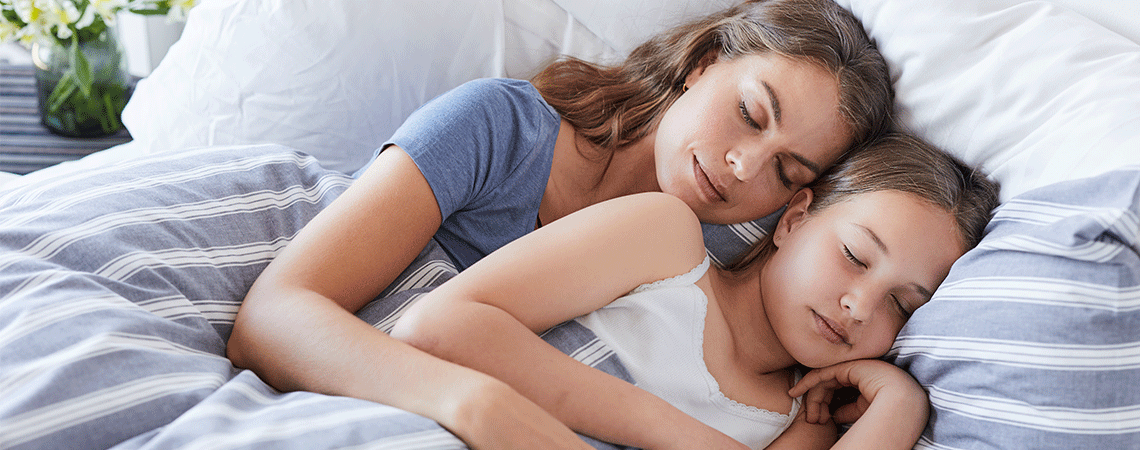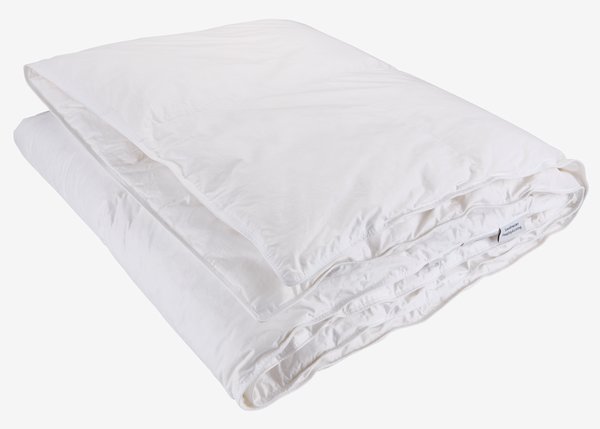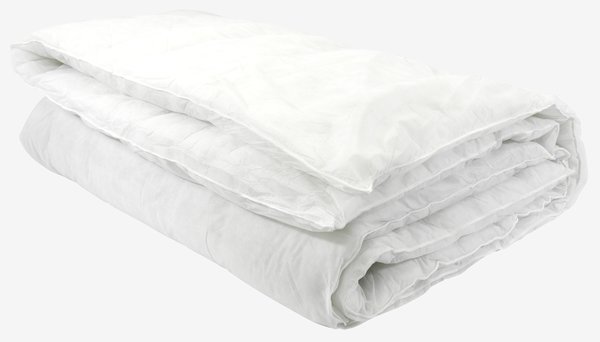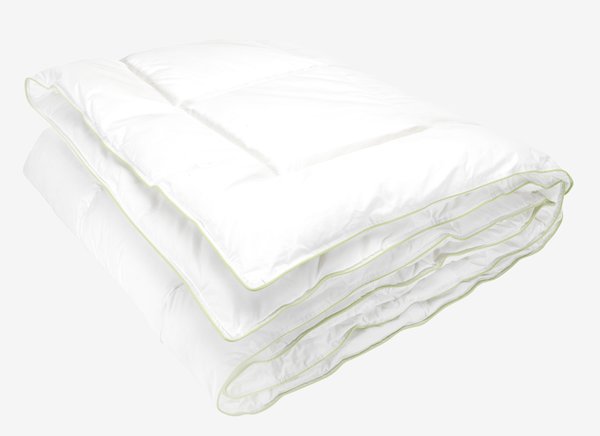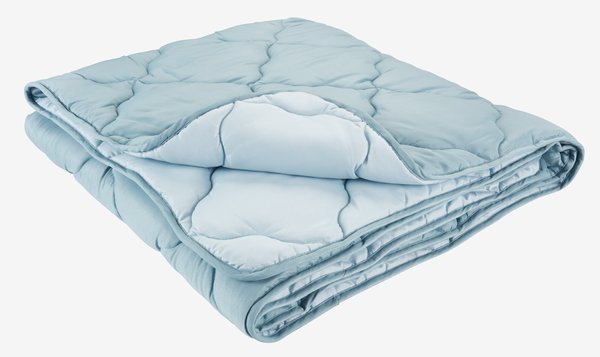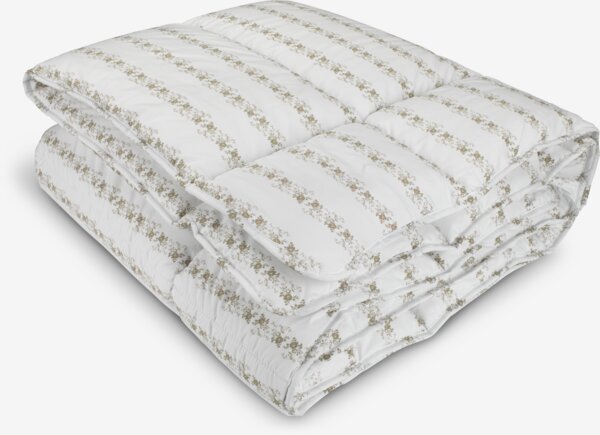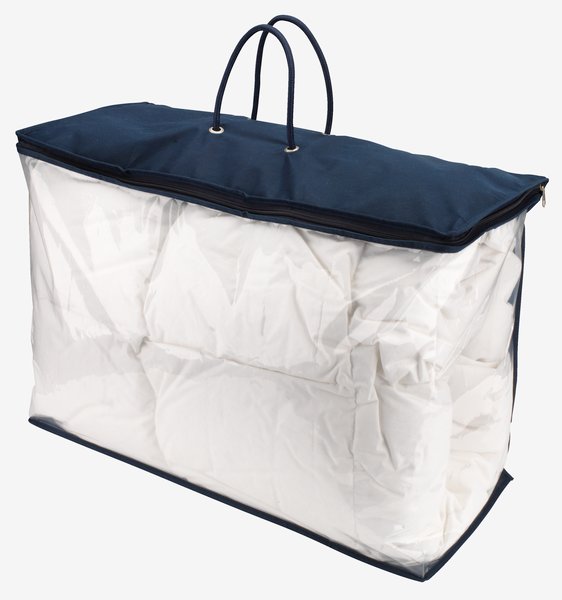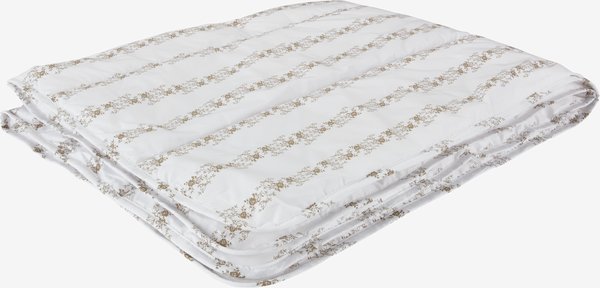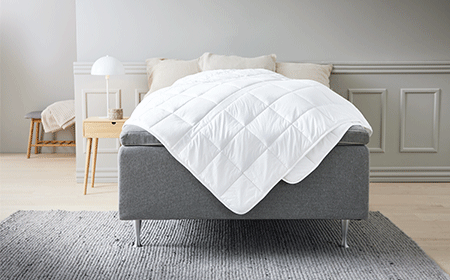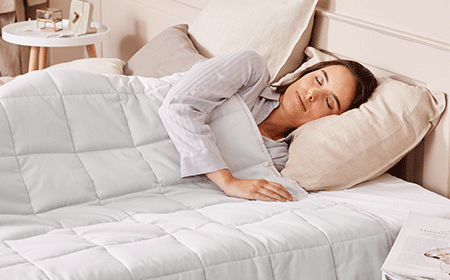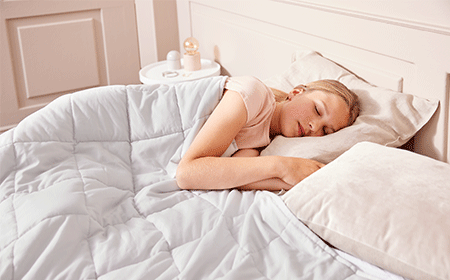Duvets come in many sizes, and it can be difficult to find the size that works best for you. Below you will find answers to a number of questions that are important to consider when choosing a new duvet:
- How long and how wide should my duvet be?
- When should I switch to a different duvet size?
- When should I use an extra-long duvet?
- What should I consider before buying a double duvet?
- What size duvet should I buy for my child?
How big should the duvet be?
The first step towards better sleep is keeping your height in mind when you choose a duvet. As a rule of thumb, your duvet should be 20-30 cm longer than you are.
"This is a rule of thumb that is generally applicable worldwide. The right width, on the other hand, is more a question of personal preference."
– Berit, Category Manager, JYSK
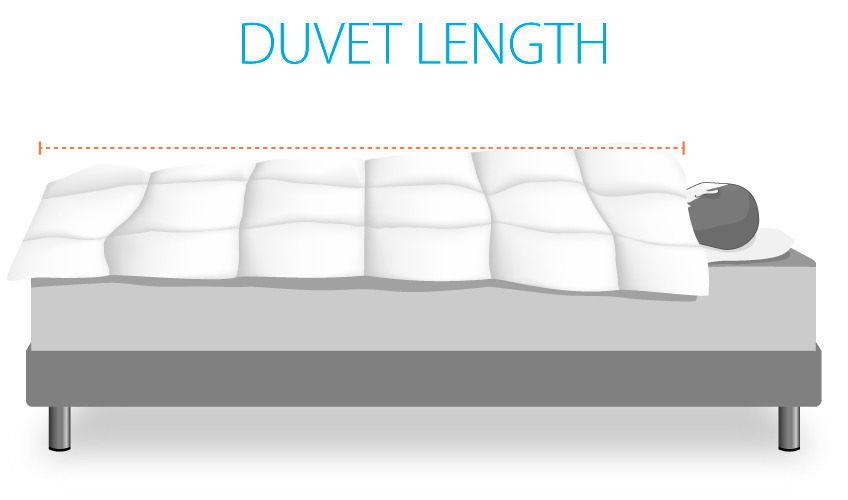
Break the rule
In some cases, it is a good idea to disregard the rule of thumb about duvet sizes. For example, if you like to sleep with the duvet over your head or tucked under your feet, it might be a good idea to opt for an extra-long duvet even if you are less than 170 cm tall.
When should I consider changing the size of my duvet?
Certain life changes can also be a cause for changing your duvet size. For example, maybe you have gone from sleeping alone with a single duvet to getting a partner and wanting a double duvet or vice versa. Maybe you have decided to get a new bed that is either larger or smaller than your previous one and you need a duvet to match. Perhaps you have a child who has outgrown their junior duvet. All of these can be reasons for switching to a new duvet size.
How big should a double duvet be?
A double duvet is a popular alternative to a normal duvet for both singles and couples. Double duvets come in a variety of sizes that fit different bed sizes and personal preferences. The size that is right for you depends to a large degree on how you wish to use the duvet.
For example, if you sleep alone and are looking for extra width so you can tuck the duvet under you, the classic variety will probably suffice. If you are looking for a duvet for both you and your partner, the extra 20 to 40 cm in width can be very useful.
What should I consider before changing to a double duvet?
Before you or you and your partner choose a double duvet, you should consider whether one duvet can accommodate both of your needs. For example, if you sweat more during the night than your partner, it could be a sign that you need a cooler duvet. If that's the case, one of you will have to compromise if you want to share a double duvet.
"Sharing a double duvet is very cosy but two single duvets make it possible to tailor each one to your individual body temperatures and sleep patterns."
– Berit, Category Manager, JYSK
Which size duvet should I buy for my child?
An adult-sized duvet will most certainly be too large for most children. If you have young children, you should consider a baby duvet or junior duvet instead. Both are made with younger children in mind.
Although your child's height is the primary deciding factor for when it is time to change from one type of duvet to the next, your child's sleep patterns can also reveal when it is time to make the switch. If the duvet is constantly falling or sliding off, it could be a sign that it's time to get a new one that can be folded under them a bit more.
Baby duvets and junior duvets
Type | Size | Fits |
Baby duvet | 67x100 cm | Children under the age of 1 |
Junior duvet | 100x140 cm | Children from 9 months old and up to school age |
Children's duvets and safety
There is strict regulation about safety in duvets, pillows, and bedding for babies and children. In JYSK, safety is a very high priority, and you can learn more about this in our blog post about safety in children's duvets.
